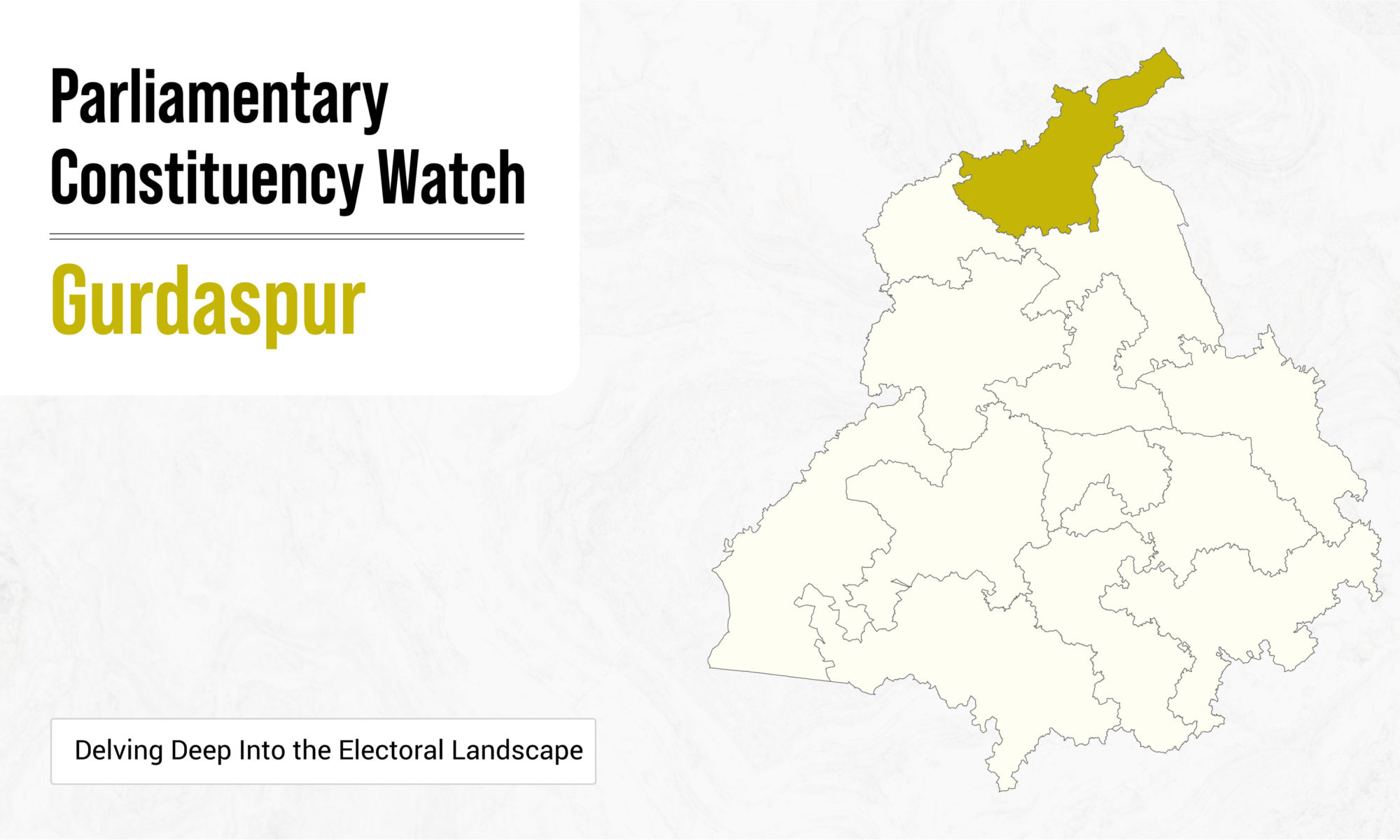Location
Gurdaspur Lok Sabha constituency is one of the 13 Lok Sabha constituencies in the Indian state of Punjab. It comprises 9 assembly constituencies and 2 districts.
Category
Designated as a General Constituency.
Voter Turnout
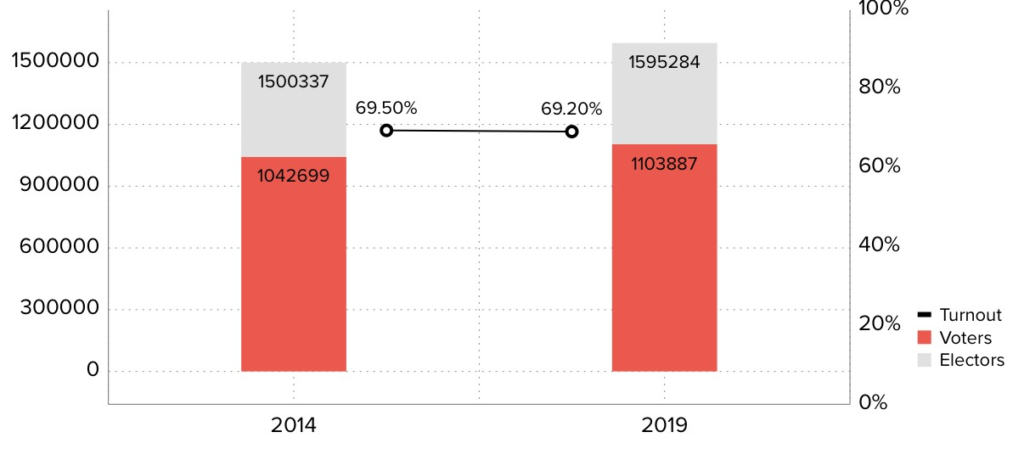
Gurdaspur Electoral Turnout Rates
During the 2014 elections, the total number of electors was 15,00,337 and the turnout stood at 69.50%, in real numbers- 10,42,699 voters. 2019 witnessed a turnout decrease; out of the 15,95,284 electors, 69.20% of voters exercised their constitutional rights. In real numbers- 11,03,887 voters.
Representation and Results
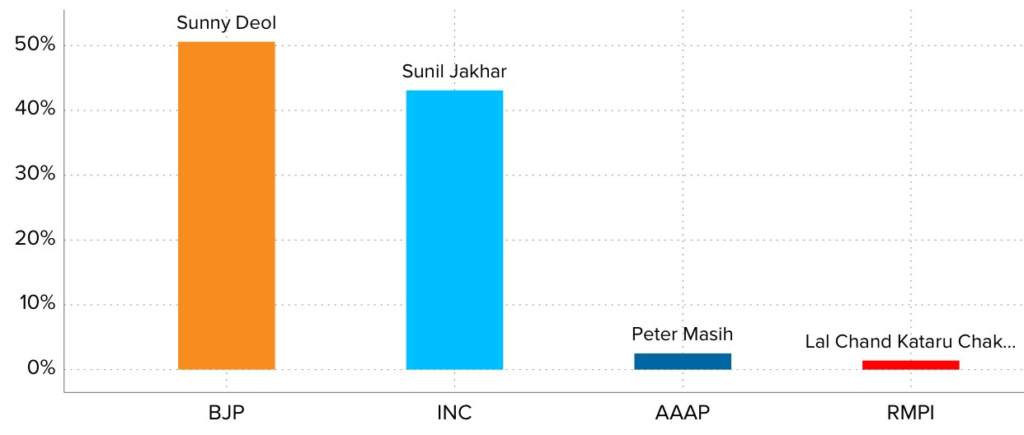
Party Wise Vote Share
2019’s parliamentary election winner, BJP’s Sunny Deol gained a vote share of 50.60% and defeated INC’s Sunil Jakhar whose vote share stood at 43.10%. The other prominent candidates in the fray were AAAP’s Peter Masih with 2.50% of vote share and RMPI’s Lal Chand Kataru with 1.40%.
Voting History –2014 & 2019
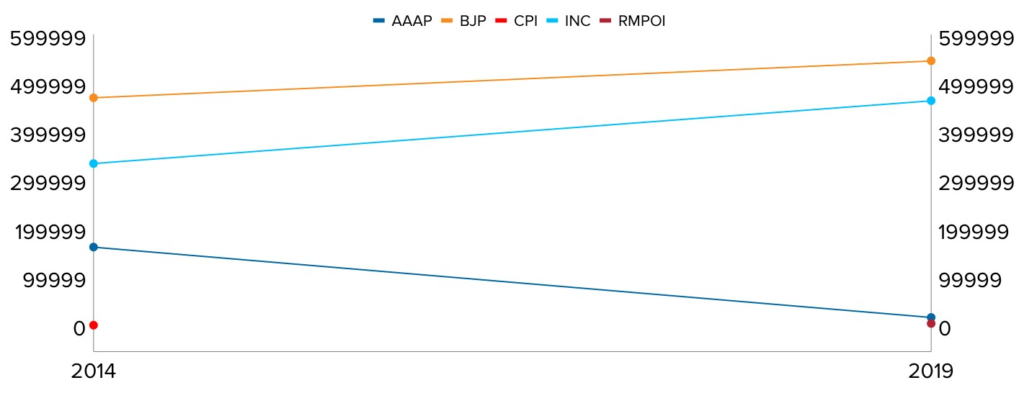
Party Wise Shift in Votes
In 2014, BJP won the constituency and earned 4,82,255 votes followed by 5,58,719 votes in the 2019 election victory. On the other hand, INC garnered 3,46,190 votes in 2014 and 4,76,260 votes in the 2019 elections.
Parties at helm through the years
The Gurdaspur constituency has been represented by a number of different parties over the years.
In 1952, the Indian National Congress (INC) emerged victorious, retaining its position in subsequent elections held in 1957, 1962, 1967, and 1971. In 1968, a by-election resulted in another win for the INC. The year 1977 saw a change when the Janata Party (JP) secured victory, but the INC reclaimed power in 1980 and 1984.

Timeline of Winning Parties
The INC continued its winning streak in 1989, 1991, and 1996. However, the tables turned in 1998 and 1999 when the Bharatiya Janata Party (BJP) gained power and continued to be at the helm in 2004 as well before it faced defeat as the INC took charge again in 2009. The BJP returned to power in 2014 and maintained its position until the 2019 elections.
Party-wise success rate
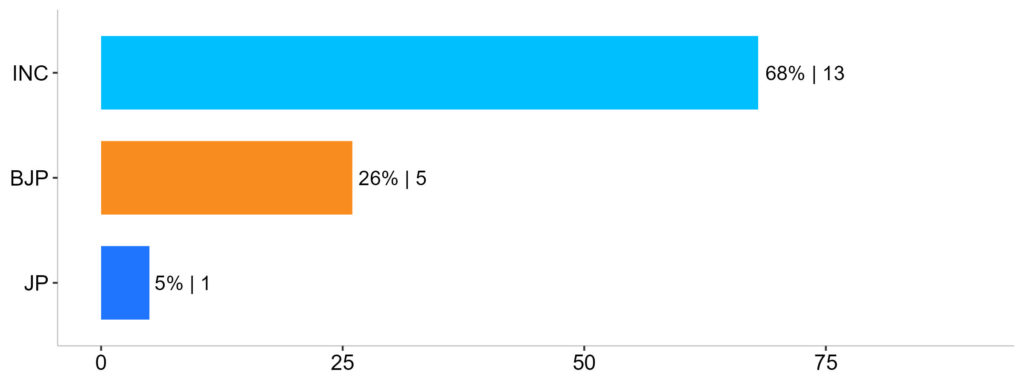
Success Rate
In terms of the success rate in securing the Gurdaspur Lok Sabha seat, INC had exhibited the highest rate of success over the years, standing at 68% followed by BJP at 26%.
Gender Wise Distribution of Contestants
During the 2009 elections, there were 13 contestants and 12 of them were male and 1 was female, in percentage- 92% and & 8%. In 2014, the total number of contestants decreased to 13, out of which 12 were male and 1 was female, in percentage- 92% and 8%.

Gender Wise Distribution of Candidates
In 2019, on the other hand, the total number of contestants increased to 15 whereby all of the contestants were male.
Gender wise voter turnout
In 2009, out of a total of 13,08,167 electors, 9,33,305 voters cast their ballots. Of the 6,70,982 male electors, 4,72,099 participated in the election, constituting a turnout rate of 70%. There were 6,37,185 female electors and of that, 4,61,206 chose to vote with a turnout rate of 72%.
In 2014, there are 14,77,262 people who are eligible to vote and 10,07,196 of them chose to exercise their right to vote. Out of these, 7,79,164 were male electors and 6,98,098 were female electors. 69% of male electors (5,37,641) and 67% of female electors (4,69,555) cast their ballots.
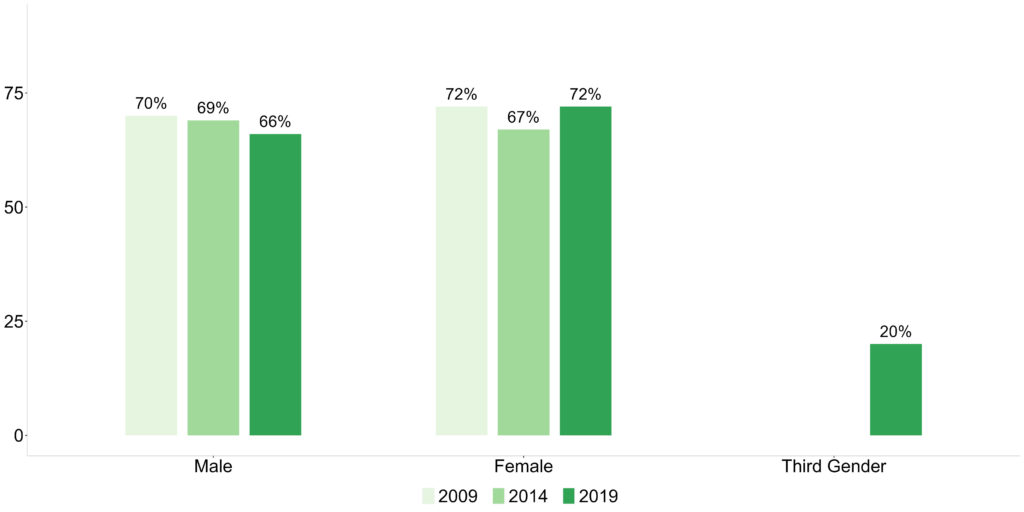
Gender Wise Voter Turnout
The total count of electors in 2019 was 15,95,284 out of which 10,93,428 chose to cast their ballot in the parliamentary elections. Out of 8,49,761 male electors, only 66% voted which is 5,60,368 male voters in real numbers. On the other hand, the voter turnout for females stood at 72% which translates to 5,33,051 voters out of a total of 7,45,479 female electors in real number.
In 2017, transgender people were included as a separate category of the third gender in electoral rolls. There were 44 electors belonging to the third gender category in the parliamentary constituency during the 2019 elections. And 9 of them exercised their newly granted constitutional right to vote and thus their turnout stood at 20%.
Gender-Wise Literacy Rate
We are taking a peek at the gender-wise literacy rate of the Gurdaspur and Pathankot districts which are part of the Gurdaspur parliamentary constituency as literacy is considered an essential indicator of the socioeconomic development of the region.
Gurdaspur District
The 2011 census of India has pegged the overall literacy rate of the Gurdaspur district at 69%. Gender-wise, the male literacy rate in the district is 73% whereas, for females, the literacy rate stands at 65%.
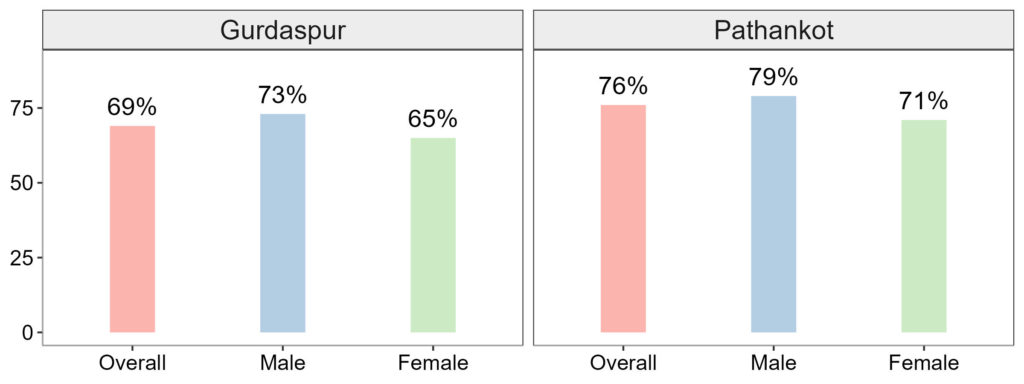
Gender Wise Literacy Rate
Pathankot District
The overall literacy rate of the district is 76%. However, when it comes to gender, the literacy rate for males in the district stands at 79% while the female literacy rate is 71%.
Stay updated on the electoral statistics for parliamentary constituencies and the changing dynamics on Meradesh App. Available on Appstore and Play Store.
Reach your constituents, gain insights into their motivations, and build campaigns based on data-driven strategies with the Meradesh Platform.
Data Source – Meradesh.org
